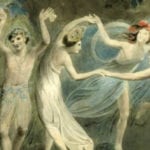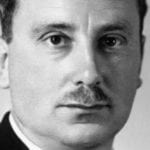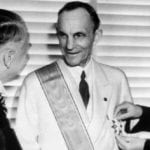 Technology
Technology  Technology
Technology  Humans
Humans 10 Everyday Human Behaviors That Are Actually Survival Instincts
 Animals
Animals 10 Animals That Humiliated and Harmed Historical Leaders
 History
History 10 Most Influential Protests in Modern History
 Creepy
Creepy 10 More Representations of Death from Myth, Legend, and Folktale
 Technology
Technology 10 Scientific Breakthroughs of 2025 That’ll Change Everything
 Our World
Our World 10 Ways Icelandic Culture Makes Other Countries Look Boring
 Misconceptions
Misconceptions 10 Common Misconceptions About the Victorian Era
 Mysteries
Mysteries 10 Strange Unexplained Mysteries of 2025
 Miscellaneous
Miscellaneous 10 of History’s Most Bell-Ringing Finishing Moves
 Technology
Technology Top 10 Everyday Tech Buzzwords That Hide a Darker Past
 Humans
Humans 10 Everyday Human Behaviors That Are Actually Survival Instincts
 Animals
Animals 10 Animals That Humiliated and Harmed Historical Leaders
Who's Behind Listverse?

Jamie Frater
Head Editor
Jamie founded Listverse due to an insatiable desire to share fascinating, obscure, and bizarre facts. He has been a guest speaker on numerous national radio and television stations and is a five time published author.
More About Us History
History 10 Most Influential Protests in Modern History
 Creepy
Creepy 10 More Representations of Death from Myth, Legend, and Folktale
 Technology
Technology 10 Scientific Breakthroughs of 2025 That’ll Change Everything
 Our World
Our World 10 Ways Icelandic Culture Makes Other Countries Look Boring
 Misconceptions
Misconceptions 10 Common Misconceptions About the Victorian Era
 Mysteries
Mysteries 10 Strange Unexplained Mysteries of 2025
 Miscellaneous
Miscellaneous 10 of History’s Most Bell-Ringing Finishing Moves
10 Bizarre Stories Of Nazi Archaeology
The National Socialists were obsessed with their bizarre racial theories and desperate to subvert the science of archaeology to support the notion of a pure race of ancient Aryan supermen. In the 1930s, the two main organizations devoted to Nazi pseudoarchaeology were the SS Ahnenerbe, dominated by Heinrich Himmler, and the Amt Rosenberg, an academic Nazi Party organization run by Alfred Rosenberg. They struggled for power, and the Ahnenerbe was eventually triumphant, but both organizations organized some loopy expeditions. We wrote recently about the bizarre expedition by the SS to Tibet to explore the history of the mythical Aryan race. Here are 10 more tales of archaeology gone badly wrong.
10 Tiwanaku
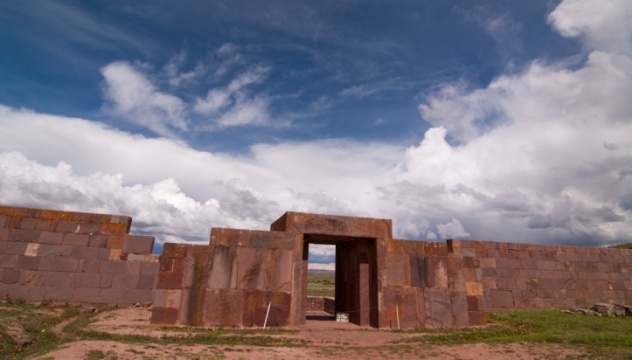
SS officer Edmund Kiss spent time in Bolivia in the 1920s, becoming friendly with Austrian adventurer and rubber maker Arthur Posnansky. Posnansky was involved with excavating the ancient city of Tiwanaku in the Altiplano region, characterized by its massive stone blacks and elaborate carvings, and he despised the local people. Also unwilling to believe that the ruins were built by the indigenous Aymara people, Kiss developed a wild theory that the city was actually built by wayward Nordic Atlanteans one million years ago; they subdued the local inhabitants before erecting the spectacular city. These ideas were supported by the European-descended Creole minority that dominated Bolivia politically and economically and depended on the exploitation of the Aymara and Quechua indigenous population. The Atlantis story gave the Creoles a mythos by which to justify their racial domination of the country.
Kiss was partially inspired by the thought of Bolivian scholar Belisario Diaz Romero, who believed there were three human species—Homo niger which arose in Africa, Homo atlaicus which arose in Asia, and Homo atlanticus, a white Aryan race arising from Atlantis. For a year, Kiss wandered the ruins of Tiwanaku, studying the ancient Tiwanakans’ elongated crania and wondering if they were artificially deformed or evidence of a superior Aryan race.
Back in Germany, Kiss’s ideas were reported in magazines as scientific fact. He also popularized his theories through a series of science-fiction novels. They described an ancient Nordic elite known as the Asen, led by a eugenicist leader named Baldur Wieborg of Thule and confronting a threatening Slavic underclass, who would relocate to the Andes to enslave the local population and ultimately return in triumph to their Arctic homeland under blue and white swastika banners, before finally being forced by climate change to move to the Mediterranean and found the Hellenic civilization.
Kiss’s ideas entranced Himmler, who invited him to contribute to Ahnenerbe-sponsored journals and gave support for a massive expedition to the Andes. Kiss spent 1938–39 putting together a team for the expedition, which was only ultimately forestalled by the outbreak of World War II. Captured after the war, Edmund Kiss was initially imprisoned as a war criminal and considered a “major offender” in denazification hearings. He was later reduced to “fellow traveler” due to his archaeological research.
9 Grove Of The Saxons

Heinrich Himmler didn’t only want to dig up legendary Aryan history; he sometimes sought to rebuild it. Himmler believed that the Grove of the Saxons, at the river Aller near Verden in Saxony, was the location of a massacre of 4,500 Saxons in AD 782 by Charlemagne, after they refused to convert to Christianity. There is some confusion over whether there was indeed a massacre or a translation error, depending on whether the Latin text reads delocare (“resettled”) or decolare (“beheaded”). Whatever the case, Himmler decided to commemorate the event, said to represent the noble sacrifice of the ancient Saxons, by laying out a thingstead, which is an ancient Germanic gathering place.
It was designed by landscape architect Wilhelm Hubotter, who bought the land from seven local farmers and set to work designing the Grove. The Grove is a large, cleared oval surrounded by a 6-meter-wide (20 ft) walk and flanked by 4,500 irregular stones said to represent the fallen Saxons. Wild roses, alder, dogwood, and other indigenous shrubs were planted around the edges of the walkway, while the interior was grazing land. At the center is the supposed thingstead, with two “leader’s pulpits” flanked by beech trees, and a council ring, which is a campfire made of boulders. The area is a floodplain for the river Aller, which, in spite of damming attempts, has repeatedly flooded the Grove over the years, seen by some as symbolic of the travails of Nazi Germany.
The area lost ideological significance when Charlemagne was restored to historical greatness status by the Nazis for his role in founding an early Germanic Reich. Despite his association with Himmler, Hubotter would later help design the Bergen-Belsen Concentration Camp Memorial commemorating the victims of the Holocaust.
8 Karelia
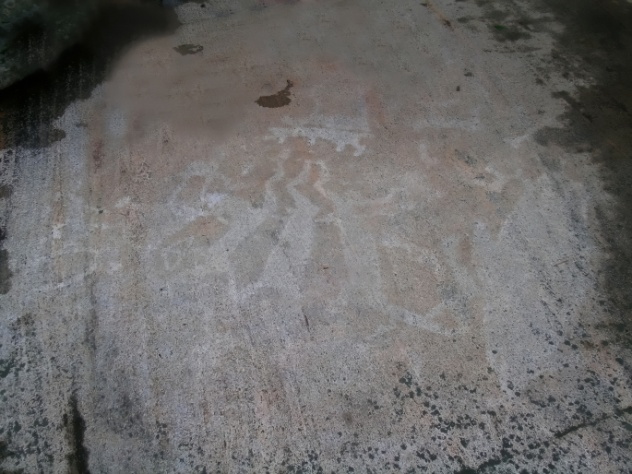
Yrjo von Gronhagen was a Finnish noble who was fascinated by the mysterious Karelia region located between Finland and Russia. He was first inspired by reading The Kalevala (The Land of Heroes), a 19th-century book by country doctor Elias Lonnrot, which speculated that the songs of Karelia were actually fragments of a lost northern epic from thousands of years ago. Lonnrot had spent years exploring the region on foot and by boat in an attempt to patch the supposed epic back together. Particularly popular for many readers was the hero character, WAinAmoinen, a powerful sorcerer who was able to transform the treeless land into a vast paradise, as well as warming the Sun, clearing pestilence, and performing a variety of magical acts.
When Gronhagen published an article about The Kalevala in a Frankfurt newspaper, he attracted the interest of Himmler, who was very interested in proving the superiority of the Aryan race through analysis of ancient German tales and Norse eddas. Gronhagen, for his part, was interested in disproving theories that the Finns were descended from Mongols or Hungarians, which were based on the fact the Finnish language is completely unrelated to the Germanic tongues. After organizing a meeting between the young Finn with an ancient-German-spirit-channeling madman named Karl-Maria Wiligut, Himmler offered Gronhagen a job with the Ahnenerbe. His duty was to conduct research into folklore at the Finnish Literature Society at Helsinki to prepare him for fieldwork and gain information on ancient Aryan religious rites that Himmler hoped to use to replace Christianity.
In 1936, Himmler authorized Gronhagen to make an expedition to Karelia to photograph witches and sorcerers and record their songs and incantations. Gronhagen brought along an illustrator, fearing the elderly sorcerers would balk at being photographed, as well as Dr. Fritz Bose, a Nazi “expert” on music and race. Bose brought along a highly sophisticated piece of audio-recording equipment, the magnetophone, a precursor to the modern tape recorder. The motley crew of pseudoscientists spent the summer wandering from one Karelian village to the next, interviewing elderly people whom they believed to be magical and recording their songs and performances of the traditional kantele zither.
In one village, a 92-year old witch named Miron-Aku was found picking mushrooms. She stared into Gronhagen’s eyes and said: “You came to me in my sleep and wanted to take away my secrets. Since then I have been sick and will die soon. What do you want of me?” Over several visits to her hut, she gave them a bitter-brewed tea made from local plants, talked about the old god worshiped before the coming of Christianity, and claimed to be able to summon spirits of ancestors to divine the future. She was dismayed when Bose played back a recording of her ritual, vowing never to practice magic again.
In the end, the team assembled a collection of over 100 songs, including lullabies, work songs, patriotic tunes, and songs of lamentation, and compiled what they considered to be evidence of the mystical power of saunas. Himmler was delighted by the results, naming young Gronhagen head of the Ahnenerbe’s Indo-Germanic-Finnish Studies department. Meanwhile, back in Finland, he began to be considered a dangerous charlatan by intellectuals who saw his project as manipulation and falsification of Finnish folklore and history for the Nazi cause.
7 Crimea
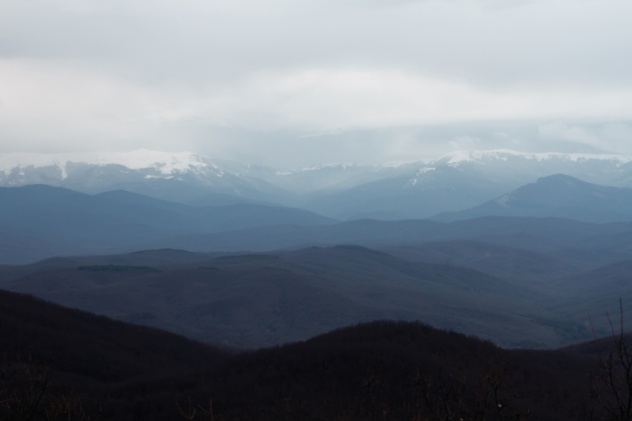
During the occupation of Crimea, occupying German forces moved quickly to secure cultural relics, which turned out to be a rather simple task of either intimidation or bartering with the cowed local population. One SS officer reported to Himmler the successful purchase of antiques such as agate necklaces, bronze figures, and pearls from the widow of a deceased Soviet archaeologist for a mere 8 kilograms (18 lb) of millet. The Ahnenerbe moved to outmaneuver the Rosenberg group by taking responsibility for museum holdings and archaeological finds. The Nazis intended for Crimea to be settled by Germanic immigrants, once the Slavic population was removed, and were interested in uncovering evidence of an ancient Germanic presence on the peninsula to help justify the resettlement. Professor Herbert Jankuhn was sent to the region to uncover evidence of this Gothic empire, a personal specialty of his.
Himmler authorized the creation of a task force, Sonderkommando Jankuhn, to help investigate the southern Russian archaeological record for material and cultural evidence of a Russian Gothic empire founded by Germanic Vikings. Sonderkommando Jankuhn roamed Ukraine, southern Russia, and the Caucasus, visiting museums and plundering art collections. Jankuhn was obsessed with finding a racial legacy for his Gothic theories. Among his notes was a photograph of a Ukrainian child with his handwriting on the back: “Nina, blonde-haired, blue-eyed girl.” Fieldwork became more difficult as the tide of World War II changed in 1943. Jankuhn returned to a professorship before being recruited again as a military intelligence officer with the Fourth SS Panzer Corps. He later surrendered to American forces in May 1945. In 1960s interviews, Jankuhn would downplay his role in the seizing of artifacts in southern Ukraine, but his involvement is a historical fact.
6 Behistun Inscription
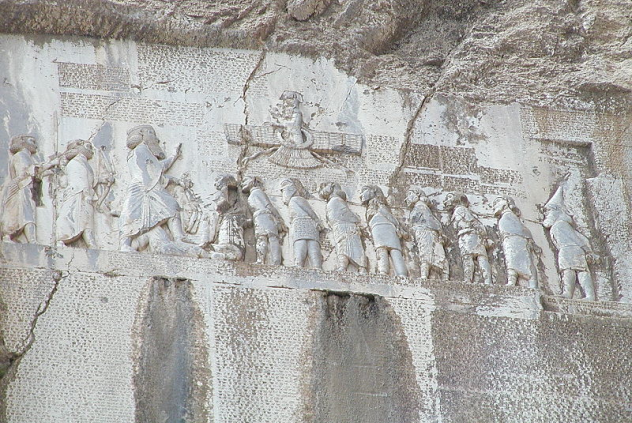
The Nazis believed that the ancient Persian empire had been built by ancient Aryans. Hans Friedrich Karl Gunther, a professor of social anthropology, published a book in 1922 claiming the Persian empire was a nordrassische Schopfung, or “north-racial creation,” emerging in the North to conquer vast lands in Asia around 2000 BC. Meanwhile, his colleague, Gerhard Heberer, believed he had evidence that the Aryans first emerged in central Germany. Aryan theory was most promoted by Walter Wust, professor for the “Seminar for Indo-Germanic Studies,” later renamed the “Seminar for Aryan Linguistic and Cultural Studies.” Wust believed the ancient Persians were indeed Aryans who had lost their superiority due to racial mixing, leading to degeneration and “denordification.” However, he believed under the leadership of Reza Khan, there was hope for a renewal.
Wust had come to the attention of Himmler thanks to his theories that the ancient Sanskrit Rig Veda text provided evidence of a Nordic race sweeping out of Europe to colonize Iran, Afghanistan, and northern India during antiquity. Himmler placed Wust in charge of the Ahnenerbe in 1937, where he strove to sideline individuals whom he saw as cranks, such as Wiligut, and upstarts, such as Gronhagen. Wust hoped to organize an expedition to Iran to investigate the Behistun (or Bisutun) Inscription, located on a mountain of the same name in Iran’s Kermanshah province. The inscription, carved sometime from 522–486 BC, discusses the life and ancestry of the Achaemenid emperor Darius I, or Darius the Great, who described himself as an Aryan.
The inscriptions had been carved into a cliff face with scaffolding, too expensive for Wust to recreate, so he proposed he, his Iranian student wife, a photographer, and an experienced mountaineer be sent via balloon to take pictures. With the outbreak of World War II, the scheme was permanently shelved.
5 Spain And The Canary Islands

Spanish dictator General Francisco Franco appointed his friend, archaeologist Julio Martinez Santa Olalla, as commissioner-general for archaeological excavations at the Spanish Ministry of National Education and Fine Arts in 1939, establishing a link with the Ahnenerbe and planning to engage in archaeological surveys in Spain and the Canary Islands to prove the presence of an ancient Aryan civilization. The Nazis had long been interested in Spain, with a number of German archaeologists visiting the north and northeast of the Iberian Peninsula to make tracings of hill shelters and cave paintings. The Spanish fascists were interested in creating a local equivalent to the Ahnenerbe, one utterly dependent on Falange, replacing the existing system run by the General Direction of Fine Arts and the Ministry of National Education.
The first collaboration between German and Spanish archaeologists during this period was an excavation of the Visigothic necropolis of Castiltierra, with many artifacts being transferred to Germany. The SS had a greater interest in the Canary Islands, a fascination dating back years, with early Ahnenerbe head Herman Wirth believing that the islands were remnants of Atlantis. It was theorized that the original inhabitants of the Canaries were pure Aryan Cro-Magnon, who maintained a pure lineage without outside pollution until the 15th century. Ahnenerbe researcher Otto Huth was meant to organize an expedition to the islands in 1939 to study the rituals and religious practices of the archipelago’s natives as a means of analyzing the religion of the ancient Aryans. This was indefinitely postponed by the outbreak of the war.
During the war, Martinez Santa Olalla sent information gleaned from Spanish archaeologists to the Germans and gave many lectures in the country. He used his connection with Himmler for his own professional gain, which ruffled feathers among other Spanish archaeologists. He maintained personal, professional, and academic ties to the Ahnenerbe until the end of the war and remained influential until he was removed from his post by conservative forces in the 1950s.
4 The Pillaging Of Poland And South Tyrol

Close to the German invasion of Poland, an Ahnenerbe functionary named Wolfram Sievers approached Himmler with a plan for the organization to take over the “protection measures of prehistorical monuments in Poland.” This duty had been previously undertaken by art-protection (Kunstshutz) units within the German army, but the SS Ahnenerbe were more enthusiastic and energetic about the project, seeking to plunder the country of its artistic and cultural treasures. Himmler appointed Sievers and a Nazi-linked academic named Heinrich Harmjanz to head the GTO, a unit dedicated to expropriating Polish property. Before the war, the Germans are believed to have employed art historians as spies to gain information about Polish artworks, and the GTO employed two ancient-history professors to draw up a list of museums, prehistoric material, and art collections in the country.
One of the groups in charge of securing Polish artworks was Sonderkommando Paulsen, led by Gestapo Untersturmfuhrer Peter Peter Paulsen. Their largest success was the recovery of the altarpiece of the Church of Maria at Krakow, which had been carved by 15th-century German artist Veit Stoss and was therefore considered cultural property of the Reich. The Poles had disassembled and scattered pieces of the altar across the country, but the Sonderkommando Paulsen was able to locate them all and have the altar reconstructed in Berlin, where it was placed in the vault of the Reichsbank.
Not long after all this, Sievers was given the difficult task of organizing a kulturkommission in the then-German South Tyrol region, which had been ceded to Mussolini’s Italy, in order to clear out any “Germanic” cultural and spiritual material before the German population was repatriated to the East. Along with obscure studies of folklore, the group’s activities were regularly stymied by disputes with the Italians over the racial lineage of many cultural items.
3 Scandinavia
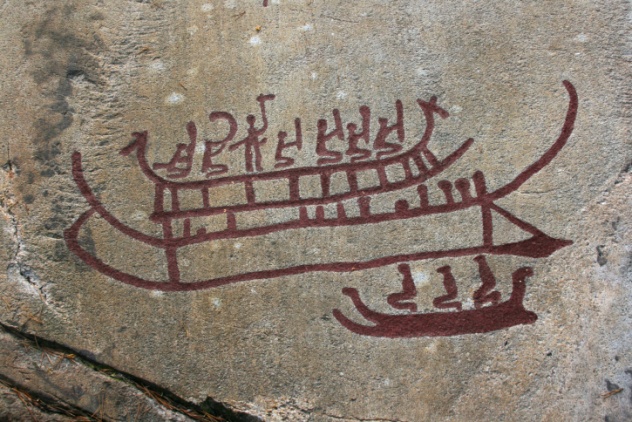
Eccentric Dutch prehistorian and head of Ahnenerbe at the time, Herman Wirth presented Himmler with a slide show in 1936 detailing his theory that petroglyphs found in southern Sweden were evidence of a 12,000-year-old language, tied in with notions of the ancient Aryans. A fascinated Himmler authorized the first Ahnenerbe expedition abroad to the Swedish island of Bohuslan to make casts of the rock carvings.
While Wirth did indeed create the world’s most important collection of ancient Norse carvings, he was also negligent when making the plaster casts, sometimes damaging engravings or not properly cleaning them afterward, leaving them marred with evidence of plaster. Many of the casts were over 3 meters (10 ft) long and weighed hundreds of kilograms, but the Ahnenerbe team gamely transported them away regardless. After the war, Wirth was allowed to continue his work, until the Swedish government finally lost patience with his sloppiness and permanently banned him from cleaning, drawing, casting, or altering any rock art in Sweden in any way.
The Ahnenerbe were active in Norway, Denmark, and Iceland during the 1930s, as well. The idea was to use archaeology to convince Scandinavians that they were a part of a great Germanic race to reduce opposition to Nazi rule. SS Ahnenerbe members like Walter Wust and Otto Huth regularly gave speeches to Norwegian students, trying to convince them of their racial origin and induce them to join the National Socialist struggle. These attempts were usually unsuccessful. Herbert Jankuhn was deeply involved in the excavation at Haithabu, in Schleswig-Holstein on the borders of Denmark. He sought to prove that the megalith builders and “stone axe people” of northern European prehistory were representatives of the superior Nordic race.
2 Greece

During the German occupation of Greece, Nazi archaeologists plundered museums and staged illegal excavations, while occupying troops destroyed statues and other artifacts. The Germans placed anti-aircraft batteries inside the Parthenon, used the monumental gateway to the Acropolis as a latrine, and turned the Museum of Livadia into a bicycle repair garage.
The Ahnenerbe is also said to have been present in the country, with Himmler allegedly becoming fascinated by stories of caves in southern Peloponnesus that stretched deep underground and extended as far as Berlin itself. Himmler believed that the ancient Aryans used these tunnels when they migrated south to avoid an icy cataclysm and founded Hellenic civilization. An expedition to the caves, called the Gates of Hades by Greeks, as they were believed to lead to the underworld of the dead, is believed to have been led by Hans Reinerth. This may have been merely a rumor, as Reinerth was not a member of the Ahnenerbe.
What is known for sure is that an archaeological team from the Reichsleiter Rosenberg Taskforce arrived in Thessaly in 1941 to excavate the Stone Age settlement located between the cities of Volos and Laris, in the hopes of proving that the ancient Greek civilization had a Germanic basis. Various finds, such as vessels, painted ceramics, stone axes, blades, and flint tools, were taken in boxes back to Germany, where the Nazis patted themselves on the back for “proving” the Aryan heritage of ancient Greece. Many of the archaeological finds lay for years wrapped in copies of the Volkischer Beobachter newspaper at the Wilhelm University in Berlin before finally being returned to Greece in the 1990s.
1 The Holy Grail

The Nazi obsession with the Holy Grail might seem like a fanciful myth pulled from the Indiana Jones film, but surprisingly, it was based on real events. Otto Rahn was a Nazi medievalist who was convinced that the Holy Grail was a treasure held by the Cathars before their destruction during the Albigensian crusade. The Cathars, he believed, were descended from Spanish Visigoths and followed a religion representing a fundamental repudiation of Judaism. He believed the 13th-century epic Parsifal was the secret to finding the Grail, which he believed was spirited out of the Cathar stronghold at Montsegur Castle by three Catholic knights who hid it in a Hessian bag.
After spending the summer of 1931 exploring subterranean caves at Montsegur that were used by the Cathars as an underground cathedral, he wrote a book on his quest called Crusade Against the Grail, which brought him fame and the attention of Himmler. After receiving a mysterious telegram offering him 1,000 reichsmarks to write a sequel along with an address in Berlin, he turned up at 7 Prinz Albrechtstrasse to be greeted by Heinrich Himmler himself. Himmler was a big fan and encouraged Rahn to join the SS, giving him full support for his Grail quest, though he was not a member of the Ahnenerbe. His sequel, Lucifer’s Court: A Heretic’s Journey in Search of the Light Bringer, was filled with turgid prose and an identifiable sense of desperation: Even with SS resources behind him, Rahn was getting nowhere in the search.
Otto Rahn’s other problem was he wasn’t really anti-Semitic—he may have been Jewish himself—and he was horrified to find anti-Semitic passages inserted into his book without his knowledge. He was also gay, which led to a 1937 arrest for engaging in homosexual activity while drunk. His punishment was being assigned for three months as a prison guard at the Dachau concentration camp, where he saw horrifying things. He was moving in anti-Nazi circles, resigned from the SS, and was rumored to have links with British intelligence. Himmler was furious at the failure to secure the Holy Grail and decided that Rahn needed to be killed. Rather than suffer assassination, Rahn offered to commit suicide. On a cold evening in March 1939, Otto Rahn drove up to the snow-covered Tyrol mountains to lie down and die in a place that he had always loved. He was found frozen to death the next day.
David Tormsen is regrettably not a Finnish sorcerer. Email him at [email protected].


